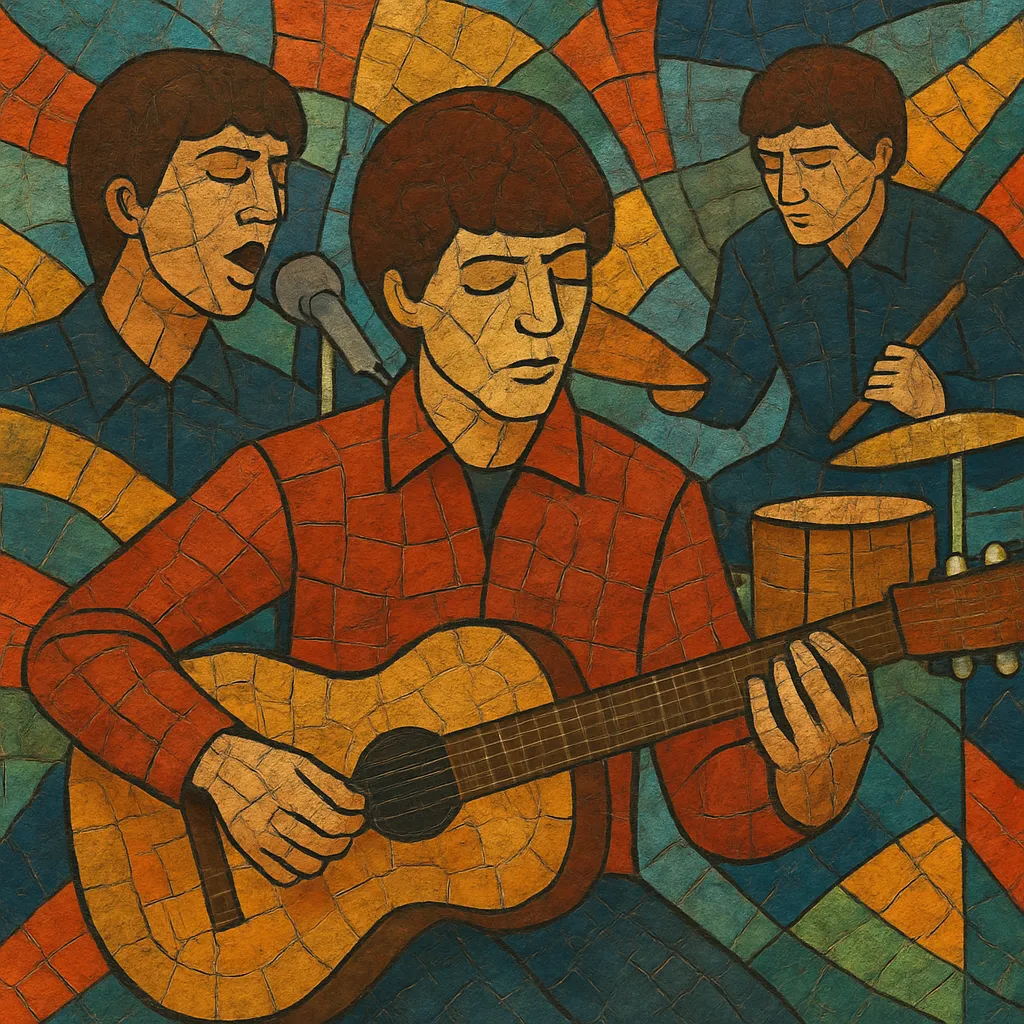Beat music (often called Merseybeat when centered on Liverpool) is a British style of early-to-mid 1960s guitar pop built on a strong, danceable backbeat, close vocal harmonies, and concise, hook-driven songwriting.
It blends the rhythmic drive of American rock and roll and rhythm and blues with skiffle’s DIY energy and doo‑wop’s harmonies, typically delivered by two electric guitars, electric bass, and drums, with frequent handclaps and tambourine.
Songs are short, catchy, and youthful in theme, favoring major keys, I–IV–V progressions, and memorable choruses that foreground melody over instrumental virtuosity.
Beat music emerged in northern England—especially Liverpool and Manchester—as British teenagers absorbed American rock and roll, rhythm and blues, and doo‑wop, filtered through the UK’s skiffle boom. Local club circuits (notably Liverpool’s Cavern Club) and grueling residency sets in Hamburg, Germany, forged tight, high‑energy ensembles with repertoire spanning R&B covers and original, melody‑first tunes.
With The Beatles’ 1963 UK breakthroughs and their 1964 appearance on The Ed Sullivan Show, beat music catalyzed the British Invasion, sending scores of UK groups to the top of US and global charts. Labels like Parlophone, Decca, and Pye packaged the sound: taut 4/4 backbeats, chiming rhythm guitars, handclaps, and polished harmonies. Acts such as The Dave Clark Five, Gerry and the Pacemakers, The Searchers, The Hollies, and Herman’s Hermits defined the style’s brisk, upbeat singles.
As the decade progressed, leading beat groups expanded their palettes—adding folk, baroque, and psychedelic elements, studio experimentation, and more complex forms—spurring the rise of pop rock, psychedelic pop/rock, and baroque pop. Meanwhile, in the US, garage bands responded to (and were energized by) beat music’s immediacy, spawning garage rock’s rawer edge.
Beat music’s songcraft—concise structures, vocal blend, and rhythmic punch—became a template for later pop and rock. It directly informed jangle pop, power pop, Britpop, and a range of indie and guitar‑driven styles, while its performance model (compact bands, strong hooks, energetic live shows) remains foundational to contemporary pop‑rock.


